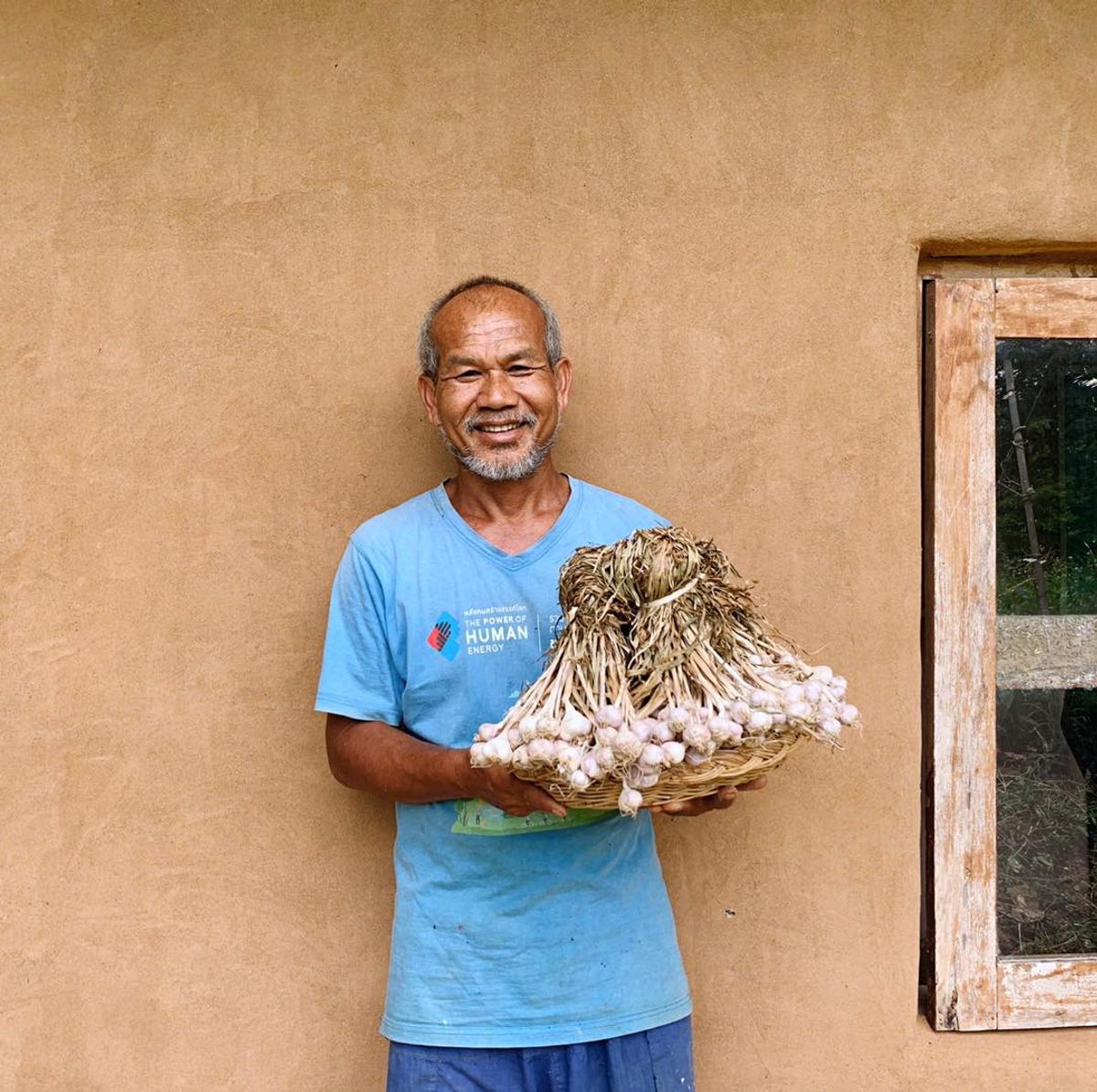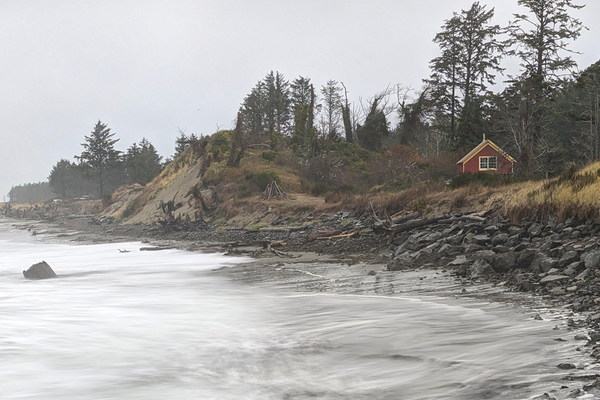
Our Favorite Environment Stories of 2022
From a ‘happiness farmer’ to dauntless vets, we met people rekindling hope through perseverance and innovation.
At Atlas Obscura, we believe in wonder. Curiosity, too. They’re two of the better angels of our nature as a species. For thousands of years, human wonder and curiosity led our ancestors to explore, innovate, experiment, and adapt. And we need those traits now more than ever. In a year when headlines about the ongoing climate crisis could be dire and overwhelming, we took heart in meeting people around the world who are tackling these challenges with creativity, goodwill, and determination.
Some of the people who inspired us are scientists who have dedicated decades to understanding—and countering—rapidly changing conditions across our planet. Others are farmers, entrepreneurs, or engineers who focus their energies locally. All of them saw a problem and decided to pursue solutions—from embracing ancient traditions to moving mountains (or at least really big monuments).
We salute these often unsung heroes who show that each of us has the power to bring about positive change.
How Thailand’s ‘Happiness Farmer’ Built an Oasis of Simple Living
by Sam Lin-Sommer, Editorial Fellow, Gastro Obscura
Jon Jandai left his home in rural Thailand as a young adult for a job in Bangkok. There, years of hard work for little pay and less satisfaction led him to an epiphany: There is something to be said for the simple life. So he left the city behind to take up organic farming and a less frenetic lifestyle, and to preserve and promote rural traditions such as seed saving. Today, the self-described “happiness farmer” lives off the land and has several projects to help others learn that what’s good for the planet is also often good for the soul.

Podcast: Moving Monuments with the Places Team
by the Atlas Obscura Podcast Team
As sea levels rise and coastlines shift, many historic and culturally significant sites are at risk of flooding or even total destruction. In this episode of our chart-topping podcast, Atlas Obscura editors Jonathan Carey and Michelle Cassidy share stories of the Herculean efforts to move lighthouses, churches, and other wide loads out of harm’s way (and sometimes into the spotlight).
Why Solar Roasting Could Be the Future for New Mexico’s Chiles
by Diana Hubbell, Associate Editor, Places
Charred, richly smoky, and often with a kick, roasted chile peppers are synonymous with New Mexico. But the traditional roasting process isn’t climate-friendly; statewide, it releases thousands of tons of carbon emissions annually. Ken Armijo, a third-generation chile farmer and engineer, cooked up a solution: He designed a new roaster that, with the aid of special mirrors, takes chiles from raw to roasted in a matter of minutes—using only the power of the sun.

To Resurrect Jordan’s Lost Forests, Plant a Seed in Hearts and Minds
by Jason Ruffin
Nearly all of Jordan’s once-expansive and lush forests have been paved over or burned for fuel and farmland in the last century. More than the beauty of a natural landscape has been lost: The miles of concrete and asphalt actually exacerbate droughts and rising temperatures. Dotted around the capital of Amman, however, in small neighborhood plots, resistance is taking root. Using a natural method that rapidly grows mini-forests of native species, a group of activists is creating small green spaces that offer shade, cleaner air, and improved biodiversity amid urban sprawl. These tiny oases won’t solve the country’s deforestation problems, of course—but they are already leading to wider public awareness of the value of preserving what’s left of Jordan’s flora and fauna, and bringing back what’s been lost.
This Nearly Lost Ancient Grain Tradition Could Be the Future of Farming
by Gemma Tarlach, Senior Editor/Writer
You may not know maslins, but your ancestors almost certainly did. These mixed-grain crops of wheat, barley, rye, and more, all grown and harvested together, were a dominant form of agriculture across most of the world for millennia. Modernization put an end to that. Today, maslins hang on in only a few countries, including Ethiopia. It’s there that botanists made an intriguing discovery: Traditional mixed-grain crops appear more drought- and pest-resistant, and more adaptable to change, than modern monocultures. Sowing the seeds of a maslin revival may be key to feeding tomorrow’s families.

When Disaster Strikes in Brazil, This Pioneering Veterinarian Jumps Into Action
by João Velozo
Wildfires, floods, and other climate change-driven disasters have pummeled Brazil in recent years. While others turn away in horror, Carla Sassi and her team grab their gear and take action. A seasoned firefighter and veterinarian, the fearless Sassi cofounded the country’s first disaster response animal rescue organization. The group of volunteers specializes in saving animals wounded or trapped by rising waters and fast-moving flames; Sassi also promotes disaster preparedness awareness and trains other veterinarians on how to set up field hospitals. While the work is often grim, Sassi and her team are undaunted. “In a disaster scenario, we know we’ll lose more than win,” she says. “So, each rescued life is a celebration.”
Is There a Future for the Sinkhole-Studded Dead Sea?
by Gitit Ginat
The Dead Sea is dying. An expanding regional population and increased industrial use of its mineral-rich water have led to ecological and economic disaster, perhaps most clearly seen along its northern coast. Thousands of sinkholes are opening up there, a consequence of the sea’s falling levels, which destabilizes the surrounding landscape. Roads, farms, and even entire villages have been swallowed, along with the livelihoods of many residents. A small but passionate group of locals is determined to turn that literal slump into an economic bump by promoting a new kind of tourism for the region: Traveling by kayak to otherwise inaccessible areas, visitors can now soak up the sinkholes’ often otherworldly beauty, and learn about the sobering science behind some of the planet’s newer geological features.

For Sustainable Coffee, These Ships Take to the High Seas
by Frankie Adkins
If you think you can’t leave a footprint on water, think again: Modern shipping has an enormous carbon footprint, equivalent to more than the annual emissions of all of Germany. There are other problems with massive cargo ships hauling goods around the world, from spreading invasive species to favoring global conglomerates over small producers who can’t compete. But ahoy there, a growing number of specialty shippers are setting sail on a new idea—or rather, a very old one. Using smaller ships and relying mostly on wind power, these new maritime cargo movers are able to transport coffee, wine, and other items at close to carbon-neutral levels. Their smaller scale also allows them to work with microbusinesses, opening up new markets for mom-and-pop shops all over the world. We’ll raise a glass of grog to that.











Follow us on Twitter to get the latest on the world's hidden wonders.
Like us on Facebook to get the latest on the world's hidden wonders.
Follow us on Twitter Like us on Facebook